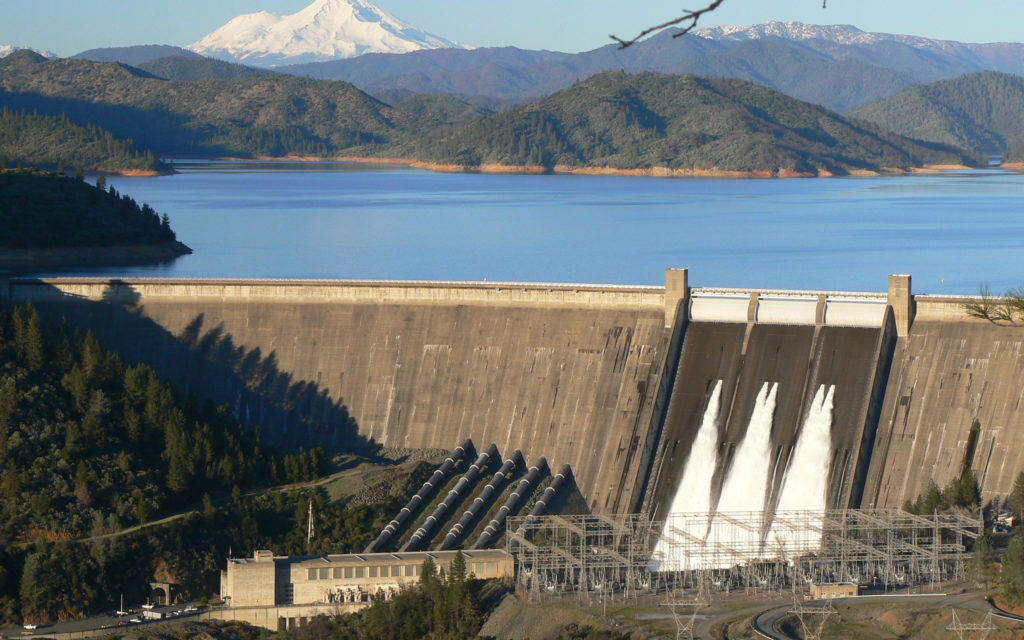By Adela Contreras, UC Davis, Summer 2020 CECS Intern
Forest management directly ties to the future of the state and must be prioritized. The water rivers and reservoirs store allow the state to get through hot, dry summers – doing nothing threatens California, the U.S.’s largest state economy, and one of the largest in the world.
Rain and snowpack from the Sierra Nevada forests feed rivers and reservoirs and deliver enough water to meet 60% of California’s water needs for use in urban life and irrigated agriculture1. They also help maintain California’s billion dollar agriculture sector, which is responsible for providing, “over a third of the country’s vegetables and two-thirds of the country’s fruits and nuts2.” Moreover, the Sierra provides hydropower to 4 million households, roughly 10% of the state’s population1. Failure to manage the forests of the Sierra puts the reliability, quality, and quantity of these water resources at risk and that’s not just because of increasingly severe wildfire – it’s also because of our forests’ connection to our water supply.
The Sierra Nevada exists within 18 counties from Northern to Southern California. A history of European settlement, fire suppression, and drought have led to the overcrowded, fire-prone forests seen today1. Overcrowding increases water loss from plants to air, prevents water from reaching the ground during rain, and extracts more water from soil, reducing the amount of water otherwise available to streams, rivers, and reservoirs. When combined with drought and climate change, risk of fire increases and is intensified by dry plants and dry soil, leading to severe fires3.

Severe fires lead to a loss of the protective forest floor, a transition from wettable to water repellent soils, and the acceleration of erosion4. Near Lake Tahoe, the King Fire of 2014 led to 330,000 tons of topsoil erosion from mountains into nearby reservoirs, ceasing hydroelectric operations for weeks5. Irreversible, catastrophic loss of forest soil leads to sedimentation of our rivers and reservoirs, decreasing water quality and reducing reservoir storage space for state water demands—especially during periods of drought. During the last drought between 2012-2016, the state utilized more fossil fuels and spent $2.45 billion more on energy due to reduced capacity of our reservoirs to provide cheap hydropower6.
The key to secure energy and food supplies may be directly linked to active forest management. While there are challenges associated with managing the vast area of Sierra Nevada Forests, as well as a lack of available funding, there are many beneficiaries and interest groups that can benefit from management projects that create outcomes such as reservoirs with longer lifetimes, offsetting greenhouse gas emissions, and combatting fire and infrastructure damage. Forest management policies can be incentivized using modeling tools being developed by the Center for Ecosystem Climate Solutions, which will predict the amount of water saved following each kind of forest treatment.
The next time you look at your electricity bill, turn on your tap, or shop for produce, consider the many benefits our rivers provide, and the attention Sierra forests need.
Sources:
1 http://dx.doi.org/10.3733/ucanr.8535
2 https://www.cdfa.ca.gov/statistics
3 http://ciwr.ucanr.edu/files/280002.pdf
4 https://www.usgs.gov/centers/ca-water/science/reservoir-sedimentation-related-wildfire-sierra-nevada-mountains-california?qt-science_center_objects=0#qt-science_center_objects
5 https://www.eenews.net/special_reports/fire_cycle/stories/1060093017
6 https://www.sacbee.com/news/california/water-and-drought/article146786244.html
This content was developed as part of the CECS Summer 2020 Science Communication Internship.

